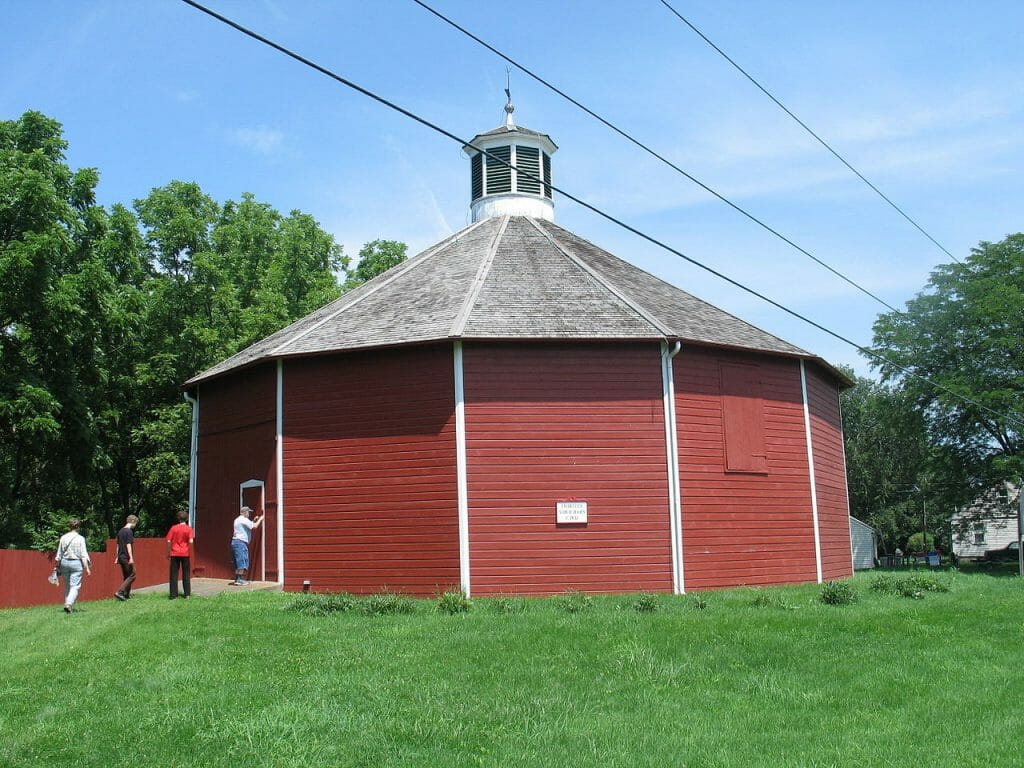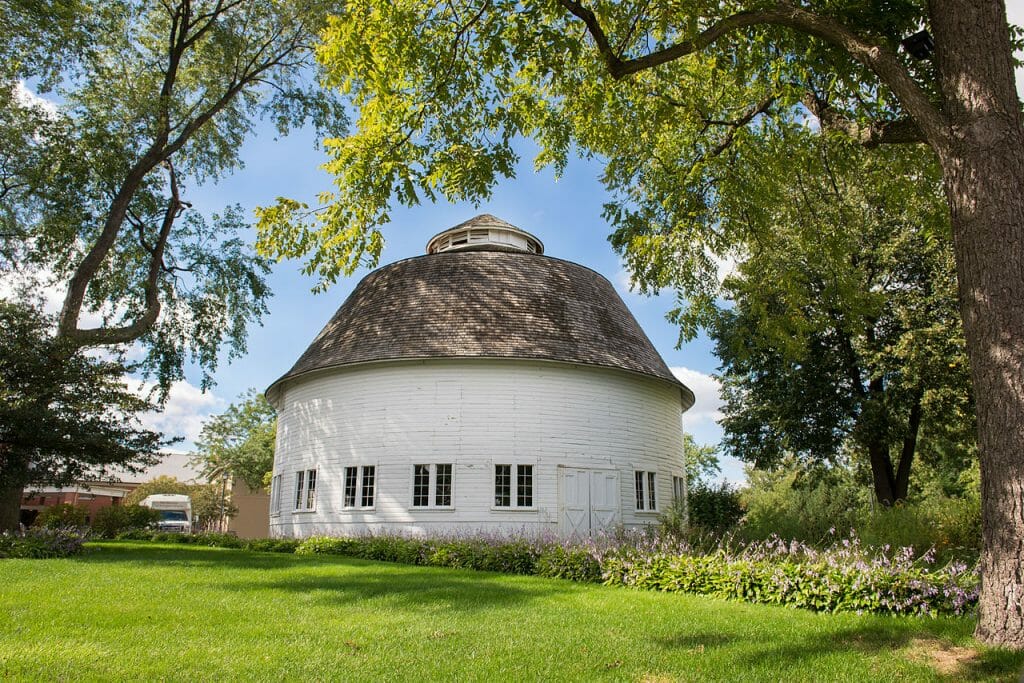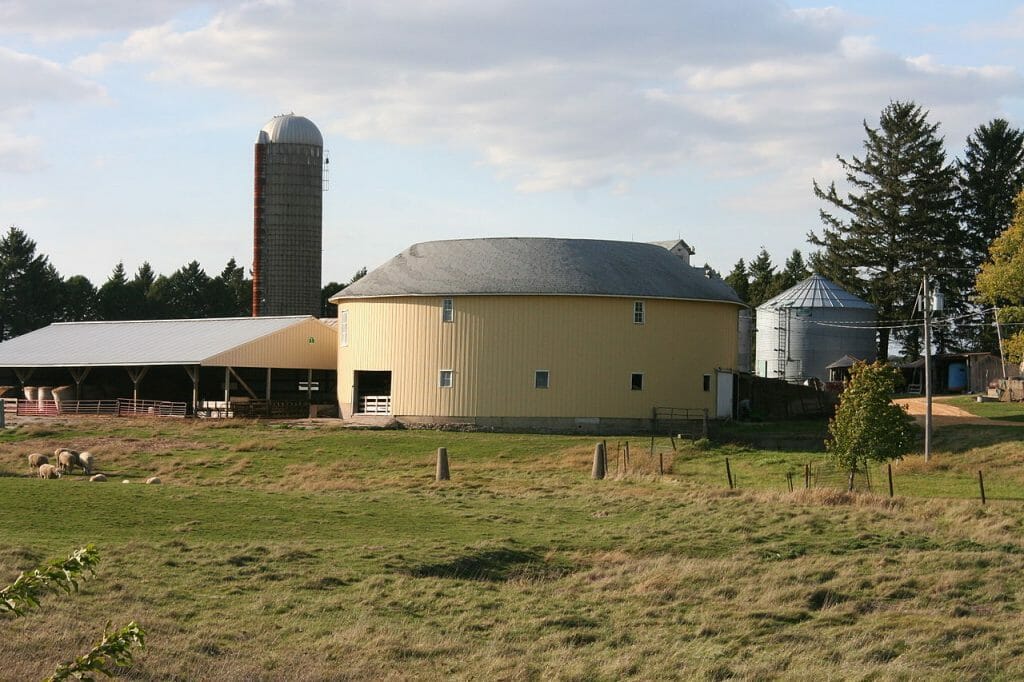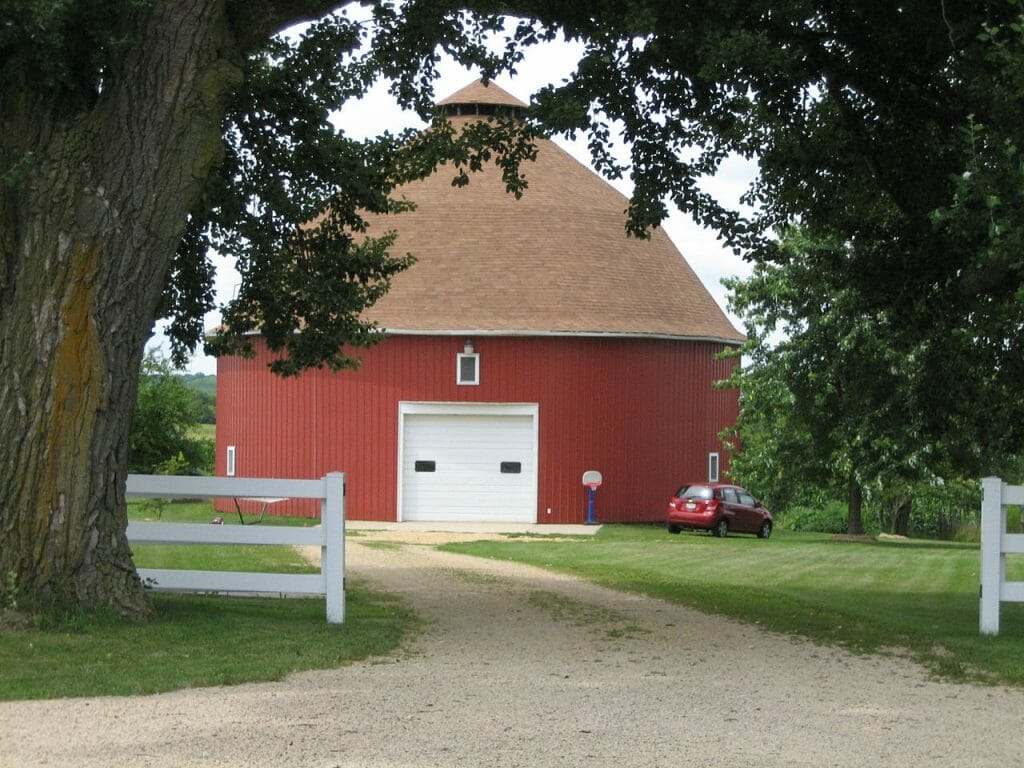If you ever travelled across the United States, especially the Midwest, you would find some round barns. That kind of style of country architecture is fairly rare nowadays, but that is also why these round barns attract a lot of attention. But why do they have this shape? Aren’t rectangular-plan barns just better?
Just like red barns with white trim, round barns are not uniquely American. There are many round barns in Europe as well and we would probably find some in other continents as well. However, they were definitely popularized in the US more and for some good reasons.
Although this was probably not the first round barn in the country, George Washington, the first president of the United States, designed and built a sixteen-sided threshing barn at his Dogue Run Farm in Virginia in 1793. The first perfectly round barn in US was built much later in 1826.

Round barns were particularly popular in the Midwest region, but they were never more popular than rectangular buildings. However, in the middle of the 19th century round barns were considered to be the future of American agriculture.

Just like everything in life, barn design does follow trends. The “Octagonal Era” of round barn design is considered to have lasted from 1850 to 1900. Meanwhile the “True Circular Era” of round barn construction stretched from about 1889 until 1936. Rounds barns were built using a variety of different materials, but typically featured a lumber construction.

But why exactly people built round barns in the first place? There were many advantages of this design:
- Round barns were ideal for farms operating on manual labour. You can do a lot of work without changing the direction of movement. You circle the barn once and feed all your cattle. You circle it the second time and clean it up. It was also ideal for manual threshers and other implements that could circle the central axis.
- Although it may seem weird, but building a round barn actually required a little bit less material than a rectangular one due to a simple roof design.
- Round barns are little bit more aerodynamic and, therefore, withstand strong winds better.

- This design allows maximizing the useful space with minimal materials. A square 2X2 building (choose any type of measurement you want) will have a space of 4. Meanwhile a round building with the same length of walls will have a space of 5.1.
- If the second floor of the barn is dedicated to feed storage, you can use gravity to lower it to the centre of the barn, where it can be easily distributed to livestock.
- Finally, there is no corner in the round barn for the devil to hide in (it is funny, but some people are superstitious).

Numerous books and even studies have named the round barns the future of American agriculture. However, in the beginning of the 20th century and especially from 1930’s the popularity of the round barns declines sharply. And there were several reasons for that:
- Standardized commercial lumber and widely available sheet goods made construction of simple rectangular buildings much easier.
- Technologies moved on – it is much easier for a tractor to drive right through a rectangular building.
- Feed preparation and storage solutions changed, many farms got storage silos.
- Round barns required some specific carpentry skills, while rectangular buildings were much easier to construct.

Although round barns are rarely built nowadays, many people still love their looks and interesting construction. You could even say that there are some round barn enthusiasts in the United States. And not for nothing – at the peak of their popularity round barns were considered to be a real innovation.




